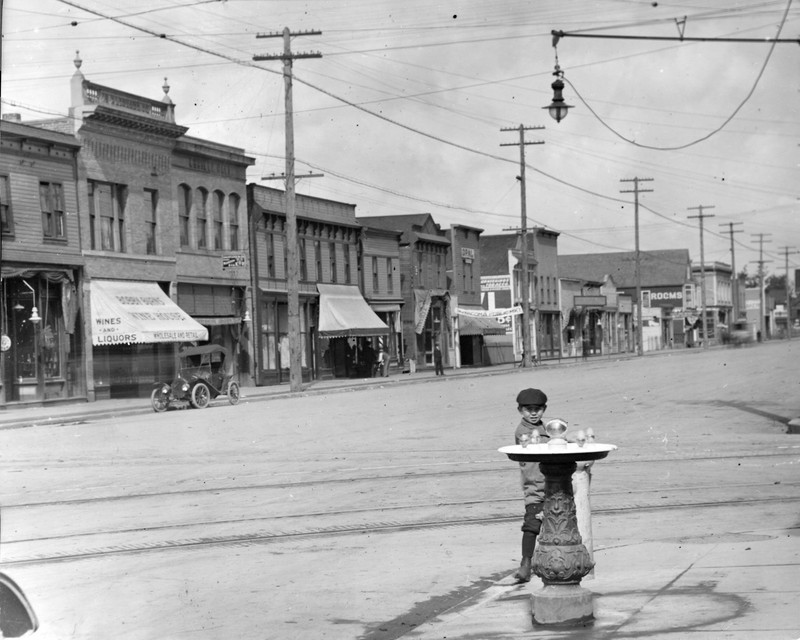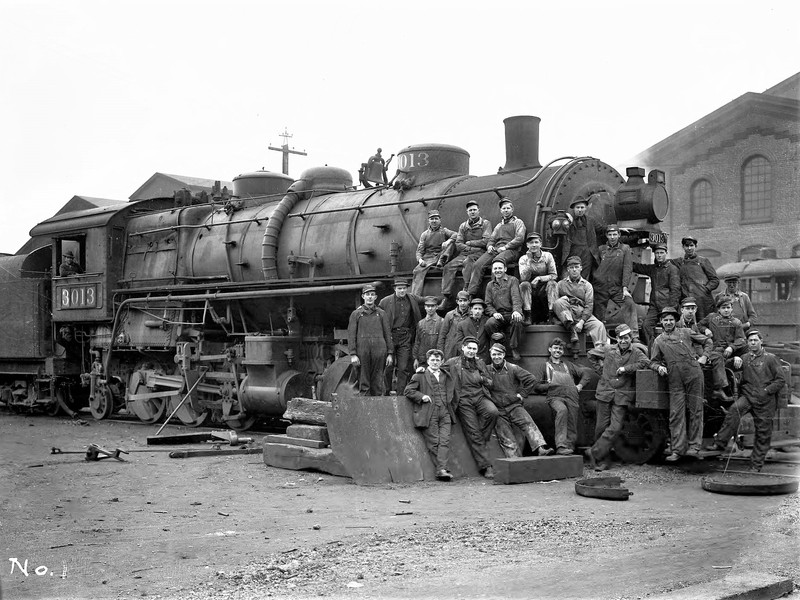Historic South Tacoma Way
Introduction
Text-to-speech Audio
In the mid-1800s the area that would become South Tacoma was prairie land. In fact, Hunt’s Prairie was the first name given to this area by pioneer settlers. Back then it was home to a few pioneering farm families. That all changed beginning in 1890 when the Northern Pacific Railway ushered in the birth of what would become South Tacoma Business District.
Images
Photo of South Tacoma Way, circa 1913.

Northern Pacific Railroad Steam locomotive #3013 circa 1938

Backstory and Context
Text-to-speech Audio
In 1890, the Northern Pacific Railway ushered in the birth of what would become South Tacoma Business District. That year the company moved its railway shops from downtown Tacoma to the prairie land south of the city, which provided significantly more expansion flexibility than their holdings downtown. The railroad buildings ran along the tracks and extended from 56th Street to South Tacoma Way. The shops, opened in 1891, consisted of machine shops, a cooling plant, a power plant, a water well and tank, welding plant, kilns, new and old car sheds. In the heyday of Tacoma’s railway history, these buildings were responsible for all the repair work west of the Mississippi, and employed about 1,000 Tacomans. Workers originally commuted on the train from the city until the trolley arrived. South Tacoma was formally annexed into Tacoma on April 17, 1891.
The South Tacoma Business District and neighborhoods sprang up in the ensuing years to accommodate the influx of laborers and their families. The first South Tacoma post office was opened in 1891, at the intersection of Orchard and South 58th Street. The post office, and the community, was eventually named ‘Edison’ in honor of Thomas Edison, who was a personal friend of the Northern Pacific Railroad owner, Henry Villard. In 1895 the town’s name was changed to South Tacoma. It was eventually incorporated into the city. The shops occupied a large portion of South Proctor. A couple blocks east, on South Union (which would later become South Tacoma Way), the business district came to life. Soon the town had an infrastructure: water, electricity, paved roads, a fire station, a park, a humane society, an orphanage and a public library, among other improvements. Hotels, inns and boarding houses sprang up to house the large numbers of workers and businesses emerged to meet the workers’ needs. The working-class community supported additional development including churches, schools, clubs and recreational activities.
The neighborhood experienced substantial growth during the automobile era, as South Tacoma Way was Federal Highway 99, which stretched from one end of the Pacific Coast to the other. South Tacoma became a local hub for the automotive industry during this time, and the large number of automobile establishments in the neighborhood today bear testament to this era. In the 1960s the construction of Interstate 5 and the Tacoma Mall had significant impacts on the neighborhood as through traffic now moved along the interstate and shopping patterns shifted away from small locally owned stores to large scale national retailers. The railroad shops closed in 1974 when the Northern Pacific Railroad merged with Burlington Northern Railroad.
The neighborhood is again in the midst of transformations with plans for Sound Transit to place a commuter rail station at the corner of South Adams and South 60th Streets, just a few blocks off South Tacoma Way. The historic storefronts on South Tacoma Way are poised to house new restaurants, retail establishments and community services for a revitalized walking commercial neighborhood with a distinct scale and historic form.
Sources
Historic South Tacoma Way. Tacoma, WA. Historic Tacoma Press, 2011.
Tacoma Public Library Digital Collections (Amzie D. Browning Collection BROWNING-158)
Public Library, Amzie D. Browning Collection, 036
